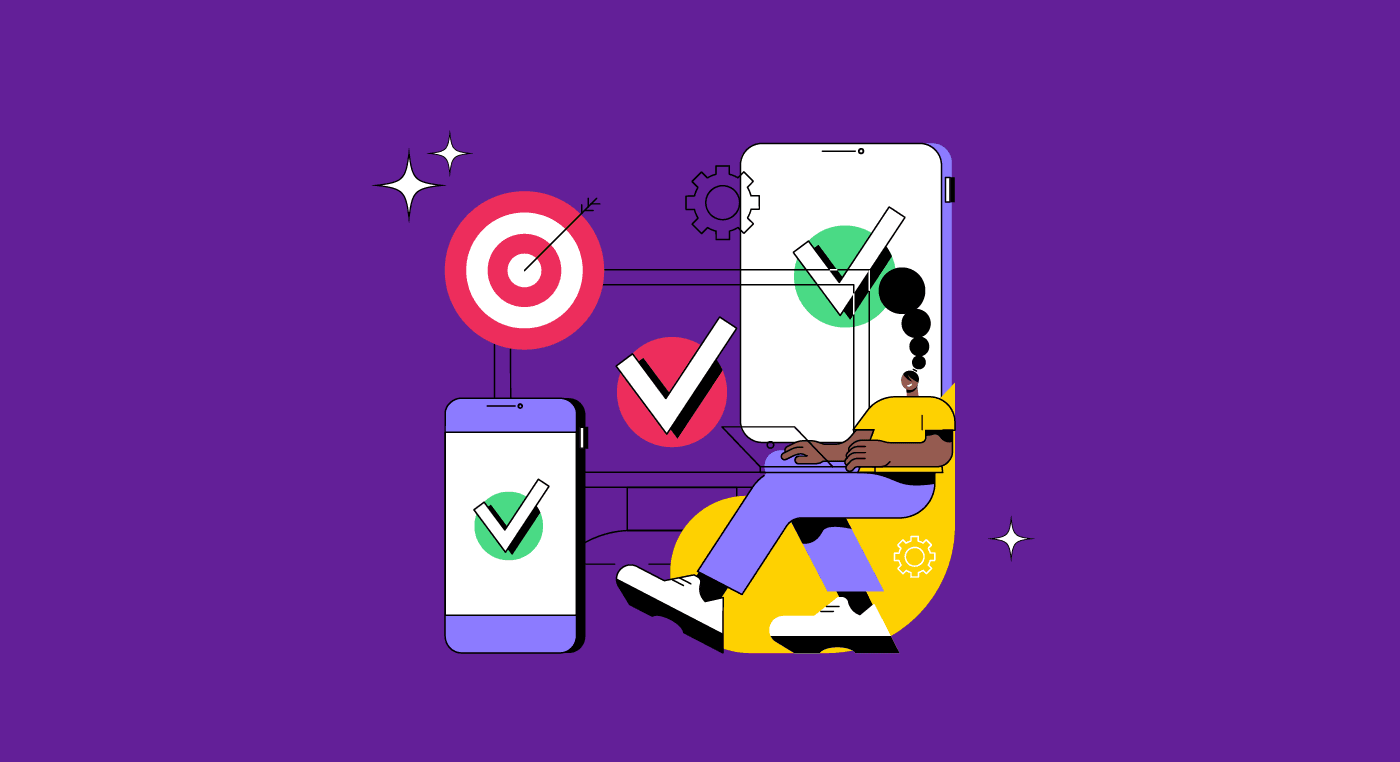We all love a good story; kids love fairy tales, teenagers tell their dramas to close friends, and families share traditions over generations.
Designers use storytelling to get more insights about the users, build empathy, and emotionally engage their audience.
Thus, UX Designers create plots with fictional characters (usually personas), adding conflicts that illustrate the users' context and their journey against the obstacles they find along the way.
These stories help everyone involved in a project to understand how the users are struggling and how to help them best!
Reading tip: Learn How to Improve your Information Architecture
What is Storytelling?

Storytelling is the telling of ideas, beliefs, experiences, or life lessons through personal stories that evoke emotions and insights in the reader/listener.
In UX Design, we use storytelling to build empathy between the team and the users. We also use stories to convince stakeholders that we are on the right path to achieving business objectives and solving user problems.
From the results of extensive UX Research, designers collect information and gather insights to build a story about the users, their problems, and how the product can help them achieve their tasks.
This story helps designers and other team members build empathy toward users and ensure the design process corresponds to the narrative. Ultimately, the ideas become easier to communicate and sell when you have a consistent story.
Remember: the storytelling's objective is to engage and convince.
Thus, when presenting the final design to the team and stakeholders, using a story is a good way to convince them about your decisions.
A narrative can translate raw data into something people can connect themselves emotionally; it makes them care about something.
Reading tip: Improve Interface's Usability With Gestalt Principles
Storytelling key components
The key components of storytelling are:
- Characters: they are the key to involving the audience in your story. They also represent the bridge between the teller and the audience. If the audience identifies themselves with the character, the story will be more efficient;
- Conflict: conflict is the lesson about how the character overcomes a challenge. The conflict will arouse emotions and connect the audience to the experiences they relate with;
- Resolution: the end of the story must provide context around the characters and the right emotions, so the audience can create a connection and process the story.
These are the basic elements of every story. Of course, we can create narratives with several layers, adding depth and texture to the stories. We will dive deeper into this in the next section.
Storytelling: Aristotle's 7 Elements

Aristotle used the famous story of "Oedipus the King" as a narrative model. The essence of the drama, according to him, is the action. Characters, scenarios, and morals of the story exist to enhance the main action of the plot.
For example, when you are narrating a story, you can't simply tell us that the chicken has crossed the street; it needs a reason. Why did it cross the street? How many challenges did it overcome to cross the street?
Before presenting the end, stories must first create tension and make the audience look for answers. This will keep people involved and curious about the resolution.
Then, finding an answer produces a pleasurable ending that completes the action and the story.
According to Aristotle, an involving narrative must contain 7 fundamental elements. These elements will help us build empathy with our users, that is, the people who use our products.
1) Plot
In a design process, storytelling shows us the challenges users go through and how they try to improve their lives.
Thus, a story's plot is about a person's life changes and usually about overcoming difficulties.
You should ask yourself: what do users need to solve?
The same line of thought is used when building a portfolio: it must tell a relevant and persuasive narrative about you.
For example, if you are a UX Designer passionate about accessibility, consider the cases and examples that enhance this in your plot and your portfolio.

2) Characters
When building a character, age or income is not enough. Moreover, we need insights into their personality.
Who are the users? What kind of data do you need to add depth to these characters? For example, what motivates them, and what are their passions, problems, and aspirations?
3) Theme
A story's theme shows us the obstacle to overcome or the project's final destination. Use a theme to help keep you focused and to provide your team with a solid narrative to continue.
How can you illustrate the obstacles a character must overcome, making the audience identify with them and evoke emotions?
4) Dialogue
Observe what users say and don't say when you are watching them. What are their behaviors?
Spot the difference between what they say in an interview and what they say when they are being observed. Note their emotions: are they angry, disappointed, sad, or happy?
5) Melody
For your story to be engaging, it must establish a tone related to the users' emotions and beliefs—the power of storytelling lies in mixing emotions, motivating us to find solutions.
6) Décor
Décor is related to scenarios. What is the physical environment of your story like? The interactions between the characters and scenarios tell us a lot about their motivation and behaviors.
So, as a designer, pay attention to the opportunities or obstacles in the user's environment.
However, place it gently in your story instead of taking too long only describing the scenario. Thus, this information is sutle communicated to the readers while they are focused in the action and conflict of the story. .
7) Spectacle
Is there any unexpected information about the users? A plot twist? The spectacle is something the audience will remember after the story is over, which most often promotes discussions and debates.
So, if you can include a spectacle, it is a great tool to boost the project!
Reading tip: Why is Design Documentation so Important?
Hands on: creating a storyboard

Now that you are familiar with the storytelling concepts, it's time to show you a step-by-step to a storyboard creation. It will help you develop narratives about the users and share them with your team.
- Collect data: the findings and insights of your UX Research;
- Choose a fidelity level: keep in mind your objectives and audience;
- Define the user persona and a scenario: choose your character and the scenario that match with the user's journey;
- Planning the board: plan your story and what you want to show before start drawing the storyboard;
- Add visual elements and captions: use captions to add details and information about the context to make your storyboard easy to understand;
- Share and iterate: share your work with others and keep improving it.
When we visualize a specific user's journey, it is easier for us to connect with them and understand the process flow.
A storyboard is a fundamental UX design tool so you can tell your user's story and enhance your team's empathy.

Storytelling as a strategy to engage

The art of storytelling is also very common in marketing, especially in promoting products.
You can use storytelling to highlight important information about your product or to build a stronger connection with your audience. After all, UX studies human behavior so they can create experiences according to users' mental models.
If you're building a narrative for your users, here are a few elements to considerate:
- Your main character;
- The problem your character needs to solve;
- How did your product help the character overcome the problem;
- Your unique results.
To elaborate a good Call-to-action, ask yourself these questions:
- What must the user do after reading your story?
- How do users feel about your product or brand?
Narrative Arc
As you lead your readers through the story, you wish to create tension between the main character and the obstacle they want to overcome.
Formatting
A story has its start, middle, and end well-defined and an important lesson to take. We are used to this format when we read a story or watch a movie; the same goes for products or brands.
Try making your product an essential part of your users' story.
Consider a Call-to-Action
After they finish the story, it is good practice to offer something of value to users to encourage them to continue their journey.
Stories have an emotional impact, but they can also be persuasive. A call-to-action can lead the audience to the next phase of the process.
Remember: the conclusion of your story should include a meaningful change to the users. This way, you'll increase the chances that they will remember this experience.
Reading tip: Learn How to Build an Efficient User Journey
Final and fundamental tips

Adapt the text according to your audience
Writing a text without considering the audience context and its vocabulary is risky.
When people don't understand or connect with the words you write, you lose their attention and possibly, credibility.
Be aware of your audience's needs
What is your audience's interest? For example, do they want to know the price of your product? Do stakeholders have a schedule or plan to follow?
You have to eliminate your audience concerns as fast as you can.
For example, if the stakeholders are worried about the user journey but you are currently working on UI elements, they will probably be skeptical about your solution.
Thus, think about the audience as you think about personas. Understand their needs and frustrations so you can create a story that really solves their problems.
Show data that support your story
A story must have facts and data to support the narrative to be persuasive. Use insights gathered from your UX Research process, so you can answer any question your audience may have.
Another example: use the usability test results to support your story and give the audience an actual situation that illustrates the current problem the product is facing.
Consider the omnichannel experience
Users do not exist only when they are using your product. Instead, consider the whole journey: what do users do before and after using your product?
For example: if you want to talk with people that have children of school age. You can write something like: "Your work is a full-time job, and it is getting hard to follow all your children's activities."
This story allows the audience to imagine the responsibilities of the described situation, and it gets easier to identify with the needs and frustrations of your character/persona.
Understanding these elements will help the audience empathize with the users, which is what designers want to accomplish with storytelling in UX Design!








